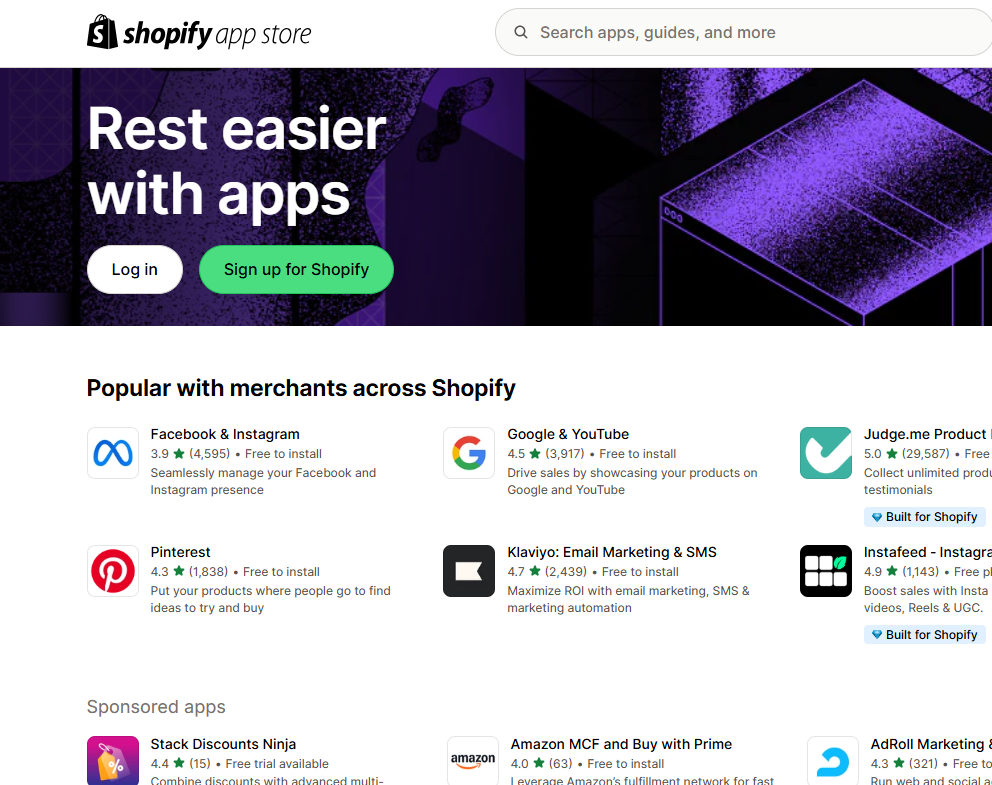Back to Blogs
 June 25, 2025
June 25, 2025
 5 mins
5 mins
 Jack
Jack
App Store vs Open Source: Navigating the Ecosystems of Shopify and WooCommerce Plugins
 June 25, 2025
June 25, 2025 5 mins
5 mins Jack
Jack

If you’ve ever spent time comparing Shopify apps to WooCommerce plugins, you’ve probably noticed they feel like completely different worlds. One is a curated app store with monthly subscriptions and sleek interfaces. The other is a vast open marketplace where free plugins sit alongside premium solutions, and quality varies wildly.
Both approaches have their merits and their pitfalls. Let’s dive into what makes each ecosystem tick and how to navigate them successfully.
Table of Contents
Quality Control: Every app in the Shopify store goes through a review process. While this doesn’t guarantee perfection, it does mean you’re less likely to encounter completely broken or malicious apps. There’s a baseline standard that gives you some confidence when you click “install.”
Seamless Integration: Shopify apps are built specifically for Shopify, which means they generally play well together and integrate smoothly with your store’s existing functionality. You don’t need to worry about compatibility issues between different developers’ approaches.
Professional Presentation: Most Shopify apps have polished interfaces and clear documentation. The barrier to entry for developers is higher, which tends to result in more professional-looking solutions.
Consistent Billing: Everything runs through Shopify’s billing system, so you get one consolidated bill rather than managing multiple subscriptions across different vendors.

Monthly Subscription Fatigue: Almost every Shopify app charges monthly fees. Install five or six apps and you could easily be looking at $100-300 per month in app costs alone. Those fees add up quickly, especially for growing businesses watching their margins.
Limited Customization: Apps work the way they work. If an app doesn’t quite fit your needs, your options are often limited to “use it as-is” or “find something else.” Custom modifications usually aren’t possible.
Vendor Lock-in: Since apps are tied to Shopify’s ecosystem, you can’t take them with you if you ever switch platforms. You’re essentially renting functionality rather than owning it.
Feature Overlap: Popular apps often duplicate functionality, but you can’t mix and match features from different apps. Want the reporting from App A but the interface from App B? You’re out of luck.
Cost Variety: You’ll find everything from completely free plugins to one-time premium purchases to subscription-based solutions. This variety means you can often find something that fits your budget, whether you’re bootstrapping or have room to invest.
Customization Potential: Most WooCommerce plugins can be modified, extended, or customized to fit your specific needs. Don’t like how something works? You can usually change it.
Mix and Match: Want to combine features from multiple plugins? Generally possible. Need to integrate with a specific service? Someone’s probably built a plugin for it, or you can have one custom-built.
Ownership: When you buy a premium plugin, you often own that version forever. Even if the developer stops supporting it, you can keep using it or hire someone else to maintain it.
Quality Inconsistency: Anyone can build a WordPress plugin, and it shows. You’ll find everything from brilliant solutions built by experienced developers to buggy messes that could break your site.
Compatibility Headaches: With thousands of plugins from hundreds of developers, conflicts happen. Plugin A might not play nicely with Plugin B, especially after updates.
Maintenance Overhead: More plugins mean more things to update, more potential security vulnerabilities, and more moving parts that could break. This requires ongoing attention.
Support Variability: Some plugin developers offer excellent support, others disappear after launch. Free plugins especially often have limited or no support options.
You Need Reliability Over Customization: If you’re running a business where downtime costs money and you don’t have technical expertise in-house, Shopify’s curated approach offers peace of mind.
You Value Simplicity: When you need a solution that works out of the box without configuration headaches, Shopify apps often deliver.
Budget Predictability Matters: If you prefer knowing exactly what you’ll pay each month rather than dealing with variable costs, the subscription model provides clarity.
You’re Scaling Quickly: When you need to add functionality fast without worrying about technical details, Shopify’s ecosystem lets you move quickly.
Budget Flexibility Is Important: When you need to start lean and scale costs with revenue, or when you prefer one-time purchases over ongoing subscriptions.
Customization Is Crucial: If your business has unique requirements that off-the-shelf solutions can’t address, WooCommerce’s flexibility becomes invaluable.
You Have Technical Resources: When you have developers on your team or budget for technical support, you can leverage WooCommerce’s flexibility while managing its complexity.
Long-term Cost Control Matters: If you’re building for the long haul and want to avoid ever-increasing monthly fees, WooCommerce’s model often proves more economical.
Start Small: Begin with essential apps only. It’s easy to get subscription-happy and end up with a bloated, expensive setup.
Read Reviews Carefully: Pay attention to recent reviews, not just overall ratings. Look for mentions of support quality and reliability.
Test Before Committing: Many apps offer free trials. Use them to ensure the app actually solves your problem before subscribing.
Consider App Consolidation: Look for apps that combine multiple features rather than installing separate apps for each function.
Prioritize Established Developers: Look for plugins from developers with good reputations, regular updates, and responsive support.
Check Compatibility: Before installing any plugin, verify it’s compatible with your version of WordPress, WooCommerce, and existing plugins.
Start with Core Functionality: Build your foundation with essential, well-established plugins before adding nice-to-have features.
Plan for Maintenance: Budget time and resources for plugin updates, compatibility testing, and occasional troubleshooting.
Both ecosystems can work brilliantly when matched to the right business needs. Shopify’s curated app store offers simplicity and reliability at the cost of flexibility and potentially higher long-term expenses. WooCommerce’s plugin ecosystem provides incredible flexibility and cost control but requires more technical awareness and ongoing management.
The key is being honest about your business’s technical capabilities, growth plans, and priorities. Neither approach is inherently better – they’re just different tools for different situations.
At Built Mighty, we help businesses navigate the WooCommerce ecosystem because we believe its flexibility and long-term value proposition serve most businesses better. But we also know when to recommend the simpler path, even if it means referring clients elsewhere.
Ready to explore what’s possible with WooCommerce’s plugin ecosystem? Let’s have a conversation about your specific needs and how to build a solution that grows with your business.


Whether you're kicking off a new project or looking to improve your current site, we're here to make it happen. Let’s build something that not only works for your business but helps it grow.
Let's talk
206-806-7809
Headquarters
Bainbridge Island, WA 98110, US

We’ve built more websites than the hairs on Peter’s head 😎